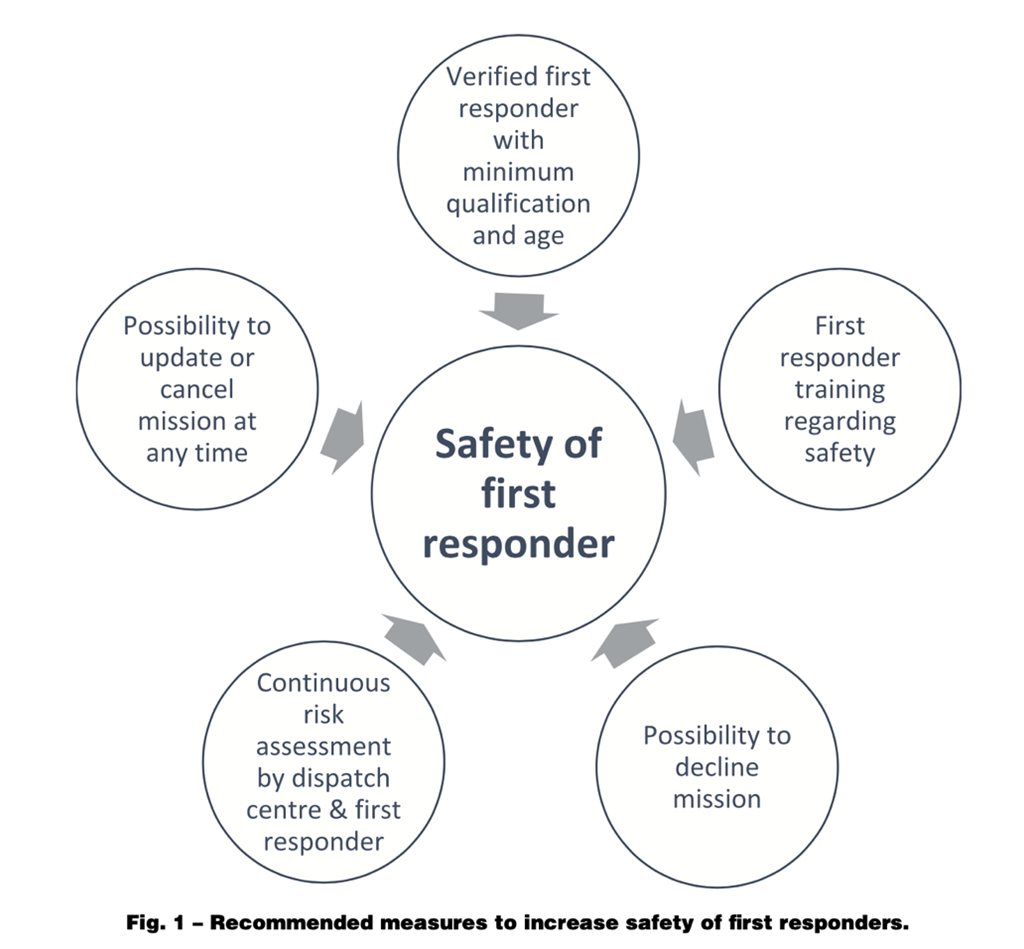The Importance of Safety for Volunteer Responders in Out of Hospital Cardiac Arrests (OHCA)
- Categories: Defibrillators
A little over two years ago Christian Eriksen collapsed in the UEFA game between Denmark and Finland. He had suffered from a sudden out-of-hospital cardiac arrest (OHCA) on the football pitch, live on television. With a quick response from first responders and medical staff at Parken in Copenhagen he survived and was back playing for Denmark’s national team only nine months later. Such speedy recovery from OHCA is possible when resuscitation attempts are started immediately, and that is not only possible on a football field.
It has been proven that dispatch of volunteer responders to OHCA is associated with increased survival rates, and the CPR guidelines of the European Resuscitation Council (ERC) recommend establishing such systems.
In accordance with the 2021 CPR guidelines from the ERC, many European countries have installed systems that alert volunteer responders through text-message or an app on their smartphone in case of a nearby OHCA. While safety for responders in any medical emergencies always should be a top priority, it is perhaps even more important if the responders are volunteer lay-persons or off duty medical staff. In a recently published Letter to the editor in Resuscitation Plus the authors cover the topic of safety for volunteer responders alerted in OHCA incidents.
Even though the overall idea of these systems emerging in Europe and elsewhere are similar, the systems alerting volunteer responders in OHCA are not uniform. And sometimes the way the systems are organized differs even within the country. The authors of the publication acknowledge this and see potential risks, and this is why they suggest these five measures to increase safety for volunteer responders:
- Volunteers should register with their name, address and medical qualification for debriefing and follow up,
- Enrolled volunteers responding to OHCA alerts shall be informed on how to operate the app and understand the importance of evaluating safety of the emergency site as well as how to perform basic life support,
- The volunteer responders are alerted in addition to regular EMS and must be able to and informed on how to decline or cancel a mission at all times and for any reason,
- The emergency dispatch centers should lead the whole mission and dispatchers should continuously perform risk assessment to increase safety and ensure as safe an environment as possible. Many systems do not dispatch to potentially hazardous situations, e.g., emergencies involving crime, weapons, violence, fire, or traffic accidents,
- It should be mandatory for dispatchers at 112 to be able to update mission data, issue warnings or cancel the mission, if the situation unexpectedly turns out to be hazardous.
Below is a figure from the publication:

In the publication, a concern is expressed that not all systems alerting volunteer responders to OHCA include methods for contacting the volunteers or being able to cancel an alarm when safety concerns arise. 112/PSAP is the core for any emergency call, and as pointed out in the publication, they should lead the whole mission including the ability to update and/or cancel the mission in a similar fashion to ambulance or firefighters.
In the hectic moments of a 112 call, information is given, and received, at high speed and the chaotic situation unfolds over time. In most medical emergencies but perhaps even more so in OHCA, time is of the essence and the early dispatch of resources to the scene grants the quick onset of lifesaving attempts. This naturally leads to potentially activating volunteers in situations where the full extent of the situation is not known. If dispatchers become aware of potential threats during the 112 call, it is important that they can cancel the mission and update any information concerning location, for example. On the other hand, it is equally important that the dispatched volunteers are able to decline or cancel their involvement in a mission and are informed on how to do it.
With more systems emerging it is encouraging to see a publication like this, where experts in the field gather to try and align and create what may resemble a standard for technology. There have previously been several publications on the improved outcome of using systems that alert volunteer responders, but I also encourage readers to keep an eye on publications from the consensus conferences on community first responders. The first was published in 2021 and the next is likely out later this year covering an attempt of unification on reporting standards on data to lay a foundation for comparison on outcome.
In July 2023, a long-expected publication was published, pooling data from over 9500 patients in 5 European countries. This is the first study with a patient number powered for showing survival outcomes: a remarkable increase in 30-day survival was reported when volunteers were first on scene. You can read the article here.
Systems for alerting volunteers in OHCA through smartphones is a resource to benefit from. Supported by solid data on the survival benefits and with suggestions to standardize technology and methodology, I believe we will see more European countries adapting solutions in line with the ERC guidelines, and hopefully with the safety of the volunteer responders in mind. Naturally we will see and hear about more cases like Christian Eriksen’s, where survivors live to tell their stories.
Take care and save a life!
Share this blog post on:
